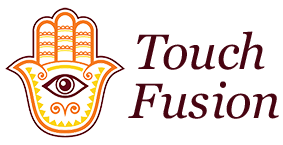Benefits of Sports Massage
Sports massage speeds recovery from exercise and enhances performance due to its effects on the cardiovascular system.
Sports massage is a modality taught in most massage schools and as such is a growing field. Many professional athletic teams as well as dance troupes use sports massage to aid in recovery between workouts and athletic events. There are even on staff massage therapists for these various professionals. Yet many people still see massage as merely a method of relaxation or a yearly treat and not as a way to speed recovery from exercise and enhance performance. This article will discuss the mechanisms whereby sports massage speeds recovery after exercise due to its effects on the cardiovascular system.
It is commonly understood that sports massage has many positive effects on the cardiovascular system. It improves circulation by mechanically assisting the venous flow of blood back to the heart. Another one of the benefits of sports massage is that it causes blood vessels to dilate. Due to the enhanced blood flow, delivery of fresh oxygen and nutrients to the tissues is improved, and the removal of waste products, toxins and carbon dioxide is hastened via the venous system. Sports massage also causes a temporary decrease in heart rate due to dilation of the capillaries and a decrease in heart rate due to relaxation and the activation of the parasympathetic nervous system. Lastly, massage causes a reduction in ischemia which is a condition marked by a reduction in the flow of blood to body parts, often marked by pain and tissue dysfunction.
Lactic acid is one waste product created by the muscle cells during exercise which can build up and cause pain and fatigue. One cause of muscle fatigue is restricted blood flow to actively contracting muscles which can lead to insufficient delivery of oxygen and inadequate removal of metabolic waste products, including lactic acid. When muscles are tight, there is less space into which the blood can flow. Blood flow is needed in order to transport valuable oxygen and nutrients into those muscle tissues. Sports massage has the effect of opening up the muscle space by relaxing the tissue which allows the blood to flow into those tissues, thus aiding in recovery. The increase in blood flow also speeds the metabolism and removal of waste products such as lactic acid.
Aside from relaxing the muscles, sports massage also assists the flow of blood back to the heart through the mechanical action of squeezing and flushing those muscles which cause the waste products to evacuate from the muscles tissues at a faster rate than without massage. It would be difficult to determine whether the vasodilation is a direct result of massage or an indirect result of the relaxing of the muscle tissues. The decrease in blood pressure aids in recovery by allowing the blood to flow through the body more easily while the heart doesn’t have to work as hard. Because of this decrease, the whole system can recover without having to put forth as much effort. Also, the decrease in heart rate and activation of the parasympathetic nerves system puts the entire body into a state of relaxation which enhances recovery from strenuous activity.
Another one of the benefits of sports massage is that the reduction in ischemia increases blood flow and enhances recovery as discussed above. Recovery from exercise causes a decrease in muscle discomfort but also reduces fatigue which can enhance performance in both the short term and over time. A 1996 study showed the effectiveness of massage in recovery and performance. Subjects who received massage after knee extension exercises were able to repeat the exercises after the massage with better results than those subjects in the control group who did not receive massage. Massage recipients also reported lower levels of discomfort in the effected muscles than those who did not receive massage. A 2004 study also produced similar results using and isometric lumbar exercise.
The results of these studies and anecdotal reports demonstrate that massage not only aids in recovery after exercise but that this speeded recovery enhances performance. If an athlete is able to perform better due to the benefits of sports massage after one treatment only, it naturally follows that regular sports massage would have lasting benefits to both recovery and performance. This is why so many athletes receive massage on an ongoing basis and why massage can benefit anyone as an adjunct to their regular exercise program.
References
Effects of Massage on Blood Flow and Muscle Fatigue Following Isometric Lumbar Exercise ~ Hidteoshi et al, Med Sci Monit, 2004
Massage and Recovery: An Electromyographical and Biomechanics Approach ~ Portero, Canon and Duforex, Speaking Days of Physical Medicine and Rehabilitation: September 27-28, 1996


